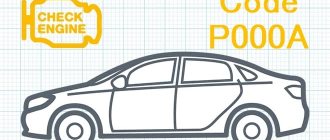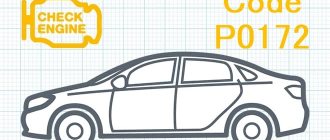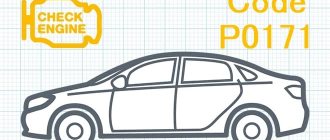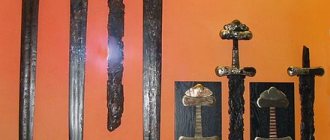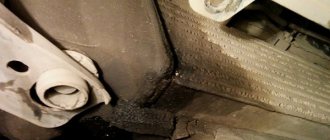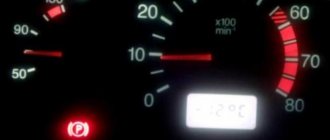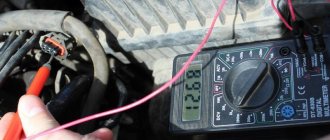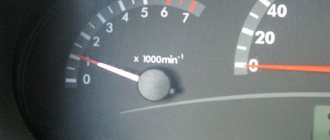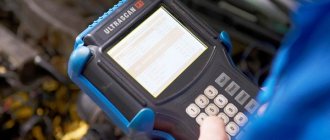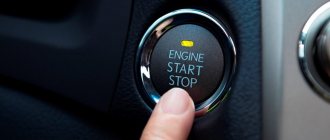Why doesn't the computer work? The most important part of computer repair is correct diagnosis of the problem. What symptoms correspond to which computer malfunctions, and what repairs are required? This article is about the main malfunctions of a modern computer, as well as ways to eliminate them. For more on this topic, read about laptop diagnostics and repair.
Primary diagnosis of computer malfunction
Primary diagnosis of the malfunction can be made using BIOS signals when the system unit starts. But for this you need to know the breakdown coding tables. Each BIOS developer (AMI, AWARD, PHOENICS) uses its own coding for the type of fault. One short signal means for everyone that the primary test (POST) has been passed and no errors were detected. The absence of any signals also means that the system does not start when power is supplied and the turn-on signal is applied. But then it’s different for everyone. Read about identifying computer malfunctions using BIOS signals. Sometimes you can distinguish a hardware failure from a software failure by a change in behavior after the power is turned off. Unlike a software reset. Many computer problems can be identified by fatal BSOD errors in Windows. But for this you need Windows itself to work. For example, eliminating screen of death error 0x000000f4.
To correctly diagnose a malfunction, experience, equipment, and spare parts are required. It is difficult to repair a system unit at home without the ability to supply serviceable parts. In professional centers this can be done easily and inexpensively.
Computer diagnostics of the motor. Don't be fooled!
In the early 2000s, despite the fact that Russia was driving foreign cars with all its might, the concept of “computer diagnostics” instilled awe in the average person. And the people who carried it out were revered as nothing less than priests of an incomprehensible “electronic cult.” Since then, the scanner, as the main and basic tool for this process, has become no less accessible than a sophisticated smartphone. You can purchase and use it yourself. And yet, most ordinary people continue to regard connecting a device to the diagnostic connector as a kind of sacrament. They take advantage of this and scam clients out of sums, the amount of which depends on the greed of the craftsmen and their ability to instill fear of possible problems. What do you need to know to prevent this from happening, and how to get the full service?
Hardcore and soft
We will not open America here! Since its inception, so many ways have been invented to check the engine that everyone, be it a simple car owner or a serviceman, can choose according to their taste, experience and budget. From simple ones, like “look into the neck and see “chocolate”” and “determine interruptions in operation by the exhaust from the pipe.” To relatively complex ones, requiring certain training and understanding of the engine structure. Let's say, measuring compression, crankcase gas pressure, when a long hose is put on the breather, and a pressure gauge is placed on it. Assessment of the condition of fluids for the mixture of oil and coolant, as well as the presence of exhaust gases in the cooling system.
And this is only what is generally known and available. Meanwhile, there are verification methods that not every service station knows. Or those that are suspected, but will never be offered to the client. Since it is necessary to purchase extra equipment, and in general it takes a long time and is unprofitable. Similar things, for example, include checking with flasks with indicator liquid for the same presence of exhaust gases in the cooling system.
Or the so-called face (from the English leak - leak), or in our opinion a pneumatic test.
Unlike measuring compression, it is carried out on stationary pistons, which makes its own positive adjustments. In addition, based on its results, one can judge the condition of the CPG and clearly identify damage to the intake or exhaust valves. Not all mechanics share this optimism about checking combustion chambers for leaks. They say that measuring the compression is quite enough to sentence the engine to be opened, and it will already show what is there and how.
But there is also an endoscope - a camera on a flexible leash, which can now be attached to any smartphone and examine the condition of the same valves, pistons, and cylinder walls.
But here you need to understand that all this diagnostics is considered hardcore. Procedures that often precede major repairs. They are unlikely to be carried out for you at service stations that specialize in replacing consumables. Or in those services that are focused on “quick repairs” - replacing suspension parts, timing belts, and the like. Nevertheless, computer diagnostics are offered almost everywhere. A striking example of the popularization of a service that until relatively recently was considered unnecessary not only by repair organizations - even by automakers.
On guard of the environment
Computer diagnostics are usually strongly associated with electronic fuel injection. In reality, at the time of its appearance, it was only in isolated cases associated with this principle of supplying a combustible mixture to the cylinders. For example, the Volkswagen 1500/1600, created on the basis of the Beetle, was the first in history (1968) to be massively equipped with fuel injection and had an on-board system that could be scanned.
And it was the first European car to meet strict Californian economic standards. Injection in Japan found a strong conveyor registration in 1971 - on the Datsun Bluebird 610 series (photo below left). But it wasn't until 1978 that the Datsun 280ZX/Nissan Fairlady (right) got something like an on-board computer with diagnostic capabilities.
In America, as we remember, fuel injection “didn’t work.” But in the 60s and 70s, first California, then other states, began to regulate the content of harmful impurities in exhaust gases. I had to match. In the first half of the 70s, catalysts appeared on cars of American companies. Along with them - electronically controlled carburetors and transistor ignition systems, then EGR. Meanwhile, it is at this time that advice from various environmental organizations (Department of Air Resources, Environmental Protection Agency) is still coming on the introduction of systems that allow emissions to be inspected. GM was the first of the US giants to do this in 1980, creating its ALDL - Assembly Line Diagnostic Link.
In the coming years, other American, European and Japanese manufacturers offering cars in the North American market introduced something similar. Everyone understood that advice is advice, and legal regulation of the diagnostic process is just around the corner. In fact, its principles were being worked out. The Society of Automotive Engineers (SAE) arrived just in time, proposing to standardize the diagnostic connector and a set of test signals. Finally, the same Department of Air Resources required all new vehicles sold in California since 1991 to be equipped with electronics testing capability. This is how OBD appeared - On-Board Diagnostic, an on-board diagnostic system. Despite the fact that its presence was established by law, and SAE proposed a unified data transmission standard, the attitude of manufacturers towards OBD can be characterized by the phrase “some for the woods, some for the firewood.” In the photo below, the 12-pin connector was the most used at that time, but far from the only one.
Moreover, in 1996, when this agency demanded a new format - OBD-II, throughout the United States - some manufacturers did not comply with this law. True, we won’t say specifically for North America. However, in the rest of the world, some auto companies, in defiance of others who supported the general trend, continued to use their own standards. Here, for example, in the photo on the left is a 16-pin OBD-II, in the center is a Mercedes-Benz connector, on the right is a BMW.
This is a Honda connector.
Toyota.
And Mazda.
Some time ago, such an approach created problems for owners of cars that were not common in a particular region of our country. And not every service had connectors. And not every model has been seen with multi-brand scanners.
It’s good that since 2001, the European Union came to the EOBD (European OBD-II) standard for gasoline engines. In 2003 (JOBD) - in Japan. And a year later - in Europe for diesel engines. And the exoticism of the former systems was compensated by Chinese manufacturers, who at some point offered an assortment of scanners at any price level and adapters from branded connectors to OBD-II. And yet, you still come across service stations where, looking at your diagnostic port, they will roll their eyes and say, “We don’t know, there’s no such thing.”
Actually, that's not so bad. In the end, at least in a relatively large city, there will definitely be a workshop equipped with everything necessary. It is much more difficult to find a specialist who will not just “read” the system. Firstly, he will draw conclusions from the information received and interpret them correctly for you. Secondly, if he discovers a problem, he will find its cause.
Diagnosis is just the beginning
You need to understand for yourself - what result do you want to get from computer diagnostics? If the comprehensive conclusion is based on the state of the hardware, then in most cases you are in the wrong place. That's why it's a computer, which shows problems with the software. On the other hand, a competent technician is able to use indirect signs to identify other future problems with the mechanical part and try to fix them. At least outline the range of operations that need to be performed. Moreover, he is obliged to give a diagnosis to all electronics. That is, not just about, but to discover why it arose. Eliminate it. However, a practicing specialist can tell you better than a journalist about the specifics of the work. There are interesting nuances in it, comical “laughter through tears” situations and, unfortunately, a total scam of money without any guarantees.
Sergey Voronin
Owner of the Computer Diagnostics Center
- “Scanner driver” - this is how you can call people who bought a device for themselves, offer diagnostics and do not go further than detecting and erasing errors in the system. Such use of diagnostic capabilities is quite possible when choosing and purchasing a car. In any case, it is better to approach this process with a scanner than without it. But even here, a specialist must have certain experience and be able to think logically. For example, it is normal if a car had some errors several thousand or hundreds of kilometers ago, they were erased and they no longer appeared. What if the error pops up periodically and it (the car is on sale!) is erased while waiting for the next client? A reason to dig deeper and, perhaps, refuse to purchase. The diagnostician must see this!
By the way, when purchasing, it’s worth looking at the system, at least to make sure that the mileage on the odometer is real. Of course, you can’t completely insure yourself here. But it happens that the mileage on “European” cars is not cleared up in all blocks. An already purchased Opel arrived with 108,000 km. And the following number was found in the engine control module.
As for the problems that arise during operation. Of course, there are those that were deleted programmatically and forgotten. MB GLE arrives. ESP fell out of operation. It turned out that the car was after a long period of inactivity, due to which the battery died. It was loaded. Interestingly, the engine started and the crossover did not drive in emergency mode. But I lost the stabilization system. In this case, it is enough to reset the errors and performance will be restored.
One more example. The battery on a Nissan Juke was replaced at a specialized center. There was already a complete “emergency” set - the variator was in the “average” gear ratio, and the failure of all on-board units. I don’t know why they couldn’t replace the battery correctly. After all, there is an application that does the so-called “data freezing” during a power loss. And then why didn’t they register the battery? The owner referred to diagnosticians who said that the scanner did not see the car. In my opinion, they simply encountered some difficulty and kicked the client out.
An elementary method of deception is based on the principle “I take money and am not responsible for anything.” That is, you pay 700–1300 rubles or more, depending on the colorfulness of the sign. The master connects, makes a slight movement with his hand and... that's it! They say there are no more errors in the system. Goodbye, better yet, farewell! But what about “doesn’t work”, “ABS doesn’t work”, etc.? They will refer to the fact that the errors are missing/removed and that the rest is not included in the diagnostic cost. So why is something like this needed? A normal diagnostician will look at the wiring and sensors. If necessary, look into the catalyst with an endoscope, check the fuel pressure, etc.
An experienced technician will see which sensors are “on the way.” In any case, he will notice incorrect readings, as in the photo below. The coolant temperature is minus 48. The system does not “check” because the corresponding sensor has not completely switched off. But the car does not heat up normally, the heater does not function.
Odyssey stopped by - after the ordeal of various services. His revs were fluctuating, let’s advise him to change everything. I agree, on Japanese cars before 2008 it is difficult to identify the problem using computer diagnostics alone. The systems did not provide all the information back then. So you can turn on your head. It turned out that the EGR valve was at fault. And how many broken calipers have we seen that are not opened using a scanner - with crowbars or pry bars!
There is a very brazen scam. Once upon a time, after replacing the fuel pump, I was offered to add it to the system. On Skyline in the 33rd body! And recently a girl in a 1998 Toyota Corsa, which was barely moving, came forward. Somewhere she was offered to wash the throttle valve - for 2,500 rubles. Then a bunch of “machine guns” were sentenced to be replaced. I started to look into it and discovered... a bent gas pedal. Well, how could she manage to mutilate her with a lady’s leg?
There are many nuances. Ignorance of some will later result in alterations. So, I often have to restore wiring assembled using strands. Well, who stopped you from using solder, a gas torch, or heat-shrink tubing? Once done, forever!
Ignoring others can lead to serious waste. It is necessary to clean the air flow sensor with compounds that do not contain acetone. Moreover, from cylinders under pressure - from a certain distance. Otherwise, the protective coating is washed off from the working element - the thread. After this, dust particles seeping through the air filter will sooner or later damage the MAF.
In principle, everyone is able to master the basics of diagnostics. I use an expensive Launch X431 scanner. I display the information on my smartphone. This makes it more convenient to share it with clients.
An opposite example is a diagnostic card in the form of a “note” issued to a client of our interlocutor in one of the services. They also say that the age of paper is over
The average person can buy something much cheaper - the ELM 327 device, which on Aliexpress costs something like 400 rubles. Install the Torque Pro application on your phone and monitor the system status. It doesn’t allow much; it only sees the engine (and writes “transmission”). For personal use it is quite enough.
Let's summarize. Appearing as a response to the legislative need to monitor the cleanliness of exhaust, the diagnostic system has over time become a good help in the fight against electronic problems. On cars of the current decade and even more so the latest generations - extremely complex in terms of on-board electronics - OBD allows you to thoroughly monitor the operation of each module, each sensor. What can I say - one thing leads to another and ultimately forms an inextricable connection.
Who would have thought that with such opportunities, diagnostics would become absolutely useless for some and a source of income with a minimum investment for others. Alas, we will not give a win-win recipe for how to change this situation. We only recommend studying the ratings on specialized resources. In advance, even before payment, negotiate the terms of the service over the phone - just look at the screen or fix the problem. Naturally, demand the latter! Well, probably, look for your “guru”, who will not take much and will rummage through your car looking for faults. Believe me, such people exist.
Computer software problems
Half of computer problems are caused by software problems. This includes file system errors due to power failures while writing to disk. The cause may also be errors in the operating system, its applications, drivers, or the consequences of viruses.
Possible sources of virus infection:
- visiting phishing sites, opening infected emails, and downloading infected programs;
- Most likely, poor antivirus protection.
Read how to remove viruses. Software malfunctions can also include BSOD errors (blue screen of death) after replacing the motherboard. The error occurs because the hard drive controller has changed.
Problems with antiviruses
Antiviruses can cause the problem. 2 simultaneously running antiviruses, for example, monstrously slow down the computer. This is unacceptable, because antiviruses from different manufacturers begin to suspect other people's antivirus databases.
Example: two Kaspersky antiviruses, basic and Internet security, if installed together, disable Windows. Nothing starts on the desktop, not even the Start button works.
By the way, Awast Anti-Virus can lead to a “blue screen of death” and cause freezes. Recommendation: change your antivirus.
The printer does not print from the computer
If the printer periodically stops printing from the computer, then the following reasons are likely:
- most likely, there is a problem with the print manager (you can check this by restarting the print manager or rebooting the system);
- printer failure;
- malfunction of the motherboard chipset, in particular the South Bridge;
- It is possible that the USB cable is bad, the driver is incorrect or damaged. There may also be problems with the printer, for example, paper is stuck, the cartridge is out, the cover is open.
Read about the causes of computer malfunction here.
If you need professional diagnostics or repairs, please contact us via chat. In the vast majority of cases, the cause of a breakdown cannot be determined without diagnostics.
Questions about computer problems
Questions about hardware failures
Question. The computer does not turn on when you press the power button, the fan jerks and stops. Answer. It is likely that the motherboard or power supply is faulty (can be resolved by replacement). Short circuit protection may also be triggered. Disconnect everything from the board, even external USB, and connect one at a time.
Question. The video card periodically disappears from the system. Answer. The video card may disappear if there is poor contact in the card slot, or the card itself fails. You need to clean the slot and test the card on another computer.
Question. Can the video card get warm due to the power supply? Answer. Never met.
Question. The fan on the processor has become very noisy, buzzing almost continuously. I almost never heard of it before. Answer. It's most likely time to do some dust cleaning. Open the system unit and remove dust from all coolers. Read about laptop cleaning here.
Question. The computer does not see the TV via HDMI, but previously it saw and showed movies. I checked the contacts. Answer. The HDMI port on either your TV or computer is probably burned out. Do not connect the HDMI cable while the devices are turned on.
Question. Small horizontal stripes are visible on the monitor. Is this a matrix? Answer. Most likely, these are leads. Select a different frame rate, such as 75Hz. If there is horizontal flickering of the lines, as well as jitter, then we eliminate it in the same way.
Question. The system reports that the USB device is not recognized, but it worked before. Answer. The electronics have probably failed, usually in the USB interface.
Question. The hard drive disappears periodically. Answer. Most likely, the problem is either in the controller on the motherboard, or on the hard drive, or in the cable.
